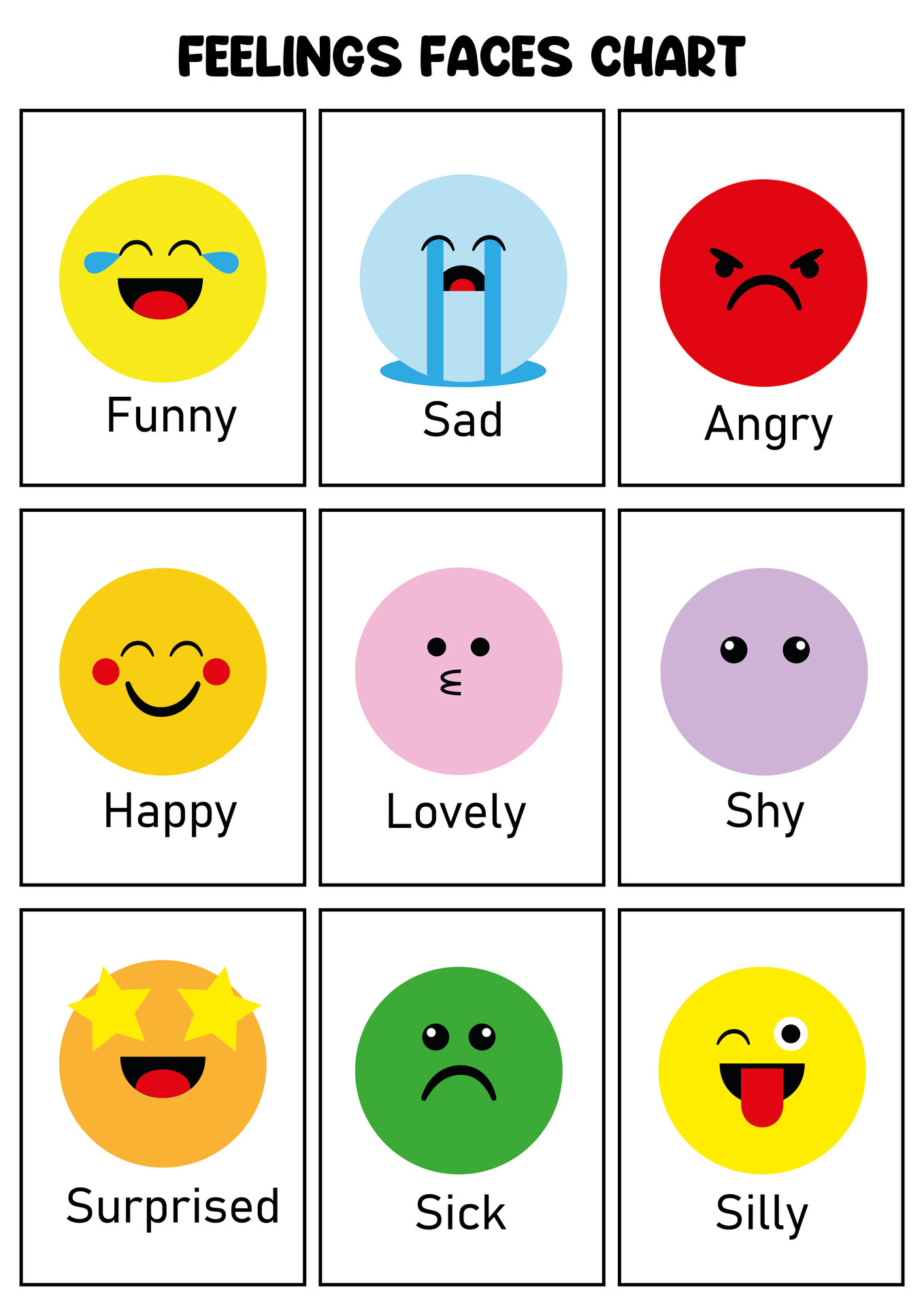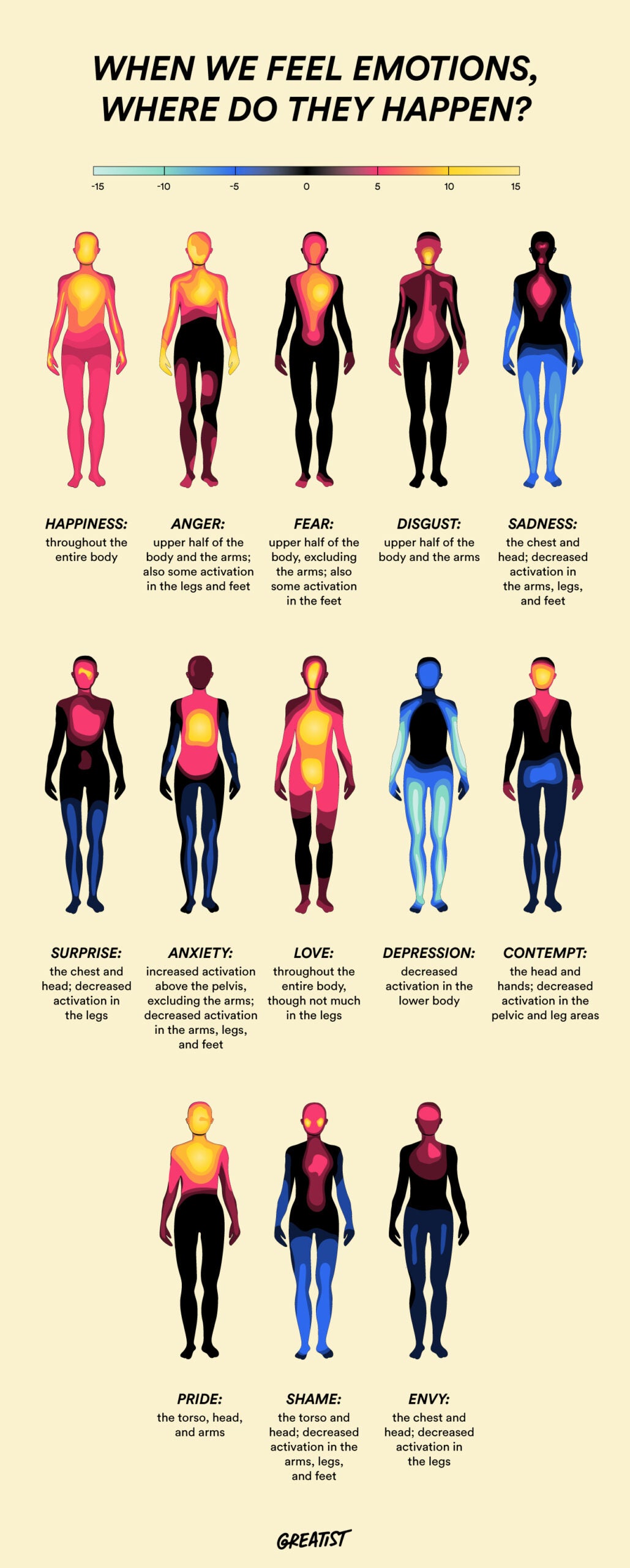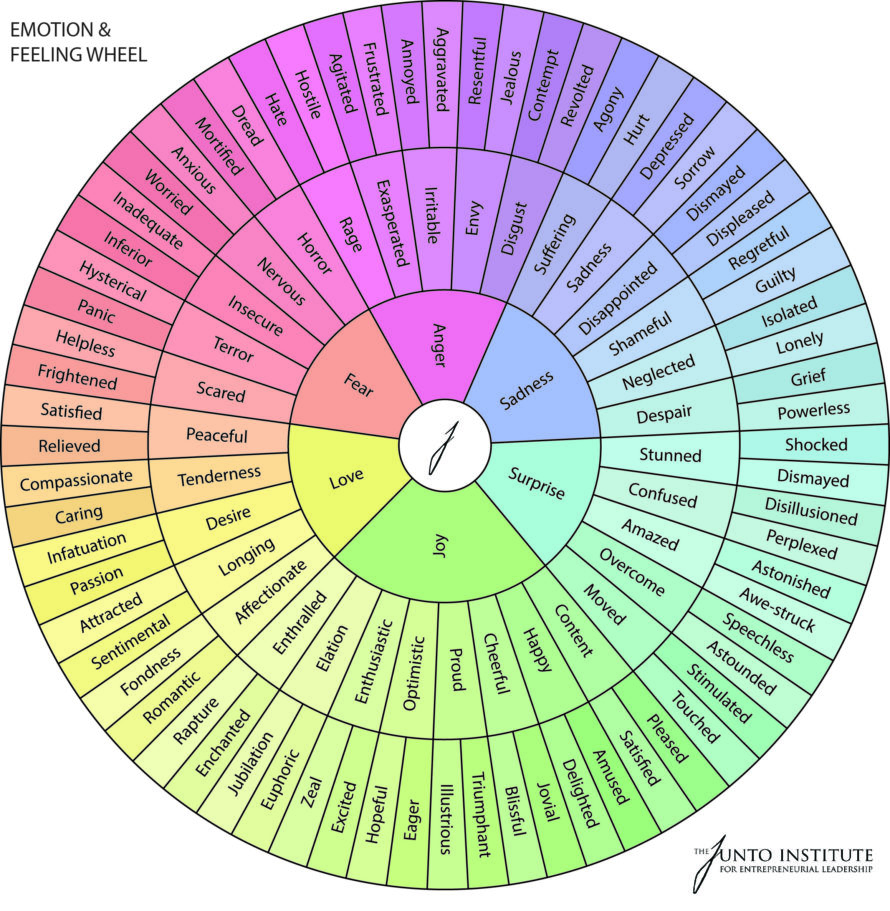Have you ever wondered how emotions manifest in our bodies? It’s fascinating to explore the connection between our emotions and the physical sensations we experience. Today, we’ll delve into this topic and discover how emotions are felt in certain areas of our bodies.
Combined Body Map 2017 | Anger | Emotions

10 Best Printable Feelings Chart
 Next, let’s explore a printable chart that visually represents a range of emotions. This chart is a useful tool for understanding and identifying different feelings. By referring to this chart, we can enhance our emotional intelligence and effectively communicate our emotions to others. It’s crucial to recognize and acknowledge our emotions for our overall well-being.
Next, let’s explore a printable chart that visually represents a range of emotions. This chart is a useful tool for understanding and identifying different feelings. By referring to this chart, we can enhance our emotional intelligence and effectively communicate our emotions to others. It’s crucial to recognize and acknowledge our emotions for our overall well-being.
Emotions in Our Bodies Activity
 Engaging in activities that explore emotions in our bodies can be incredibly insightful. This particular intervention works best when we focus on bodily sensations associated with emotions. By becoming more aware of these sensations, we can better understand the signals our bodies send us. This knowledge empowers us to manage our emotions effectively and make informed decisions in various situations.
Engaging in activities that explore emotions in our bodies can be incredibly insightful. This particular intervention works best when we focus on bodily sensations associated with emotions. By becoming more aware of these sensations, we can better understand the signals our bodies send us. This knowledge empowers us to manage our emotions effectively and make informed decisions in various situations.
BODY MAP FRONT OF BODY - Google Search
 A simple Google search reveals various body maps that provide insights into emotions. These maps highlight how different emotions are associated with specific areas on the front of our bodies. For example, joy and love are often felt in the heart area, while fear and anxiety tend to be associated with sensations in the stomach or chest. Exploring these maps can deepen our understanding of emotional experiences.
A simple Google search reveals various body maps that provide insights into emotions. These maps highlight how different emotions are associated with specific areas on the front of our bodies. For example, joy and love are often felt in the heart area, while fear and anxiety tend to be associated with sensations in the stomach or chest. Exploring these maps can deepen our understanding of emotional experiences.
Emotions Chart
 Another helpful tool for understanding emotions is an emotions wheel or chart. This chart visually represents the range of emotions we can experience. By referring to this chart, we can broaden our emotional vocabulary and express ourselves more accurately. Sharing our emotional states with others can lead to better relationships and increased empathy.
Another helpful tool for understanding emotions is an emotions wheel or chart. This chart visually represents the range of emotions we can experience. By referring to this chart, we can broaden our emotional vocabulary and express ourselves more accurately. Sharing our emotional states with others can lead to better relationships and increased empathy.
Emotion Maps: How Emotions Change in the Body
 The Science of People dives deep into understanding how emotions change within our bodies. Emotion maps illustrate the physiological responses we experience when different emotions are evoked. These maps highlight the interconnectedness of our emotions, thoughts, and bodily sensations. By comprehending these connections, we gain valuable insights into our emotional well-being.
The Science of People dives deep into understanding how emotions change within our bodies. Emotion maps illustrate the physiological responses we experience when different emotions are evoked. These maps highlight the interconnectedness of our emotions, thoughts, and bodily sensations. By comprehending these connections, we gain valuable insights into our emotional well-being.
Figure 1 from Bodily maps of emotions are culturally universal
 Research has shown that bodily maps of emotions are culturally universal. Figure 1 from a study on bodily maps illustrates the consistent patterns of emotional experiences across different cultures. This discovery supports the idea that emotions are fundamental to the human experience, transcending cultural boundaries. It’s incredible to consider that despite our diverse backgrounds, we share common emotional responses.
Research has shown that bodily maps of emotions are culturally universal. Figure 1 from a study on bodily maps illustrates the consistent patterns of emotional experiences across different cultures. This discovery supports the idea that emotions are fundamental to the human experience, transcending cultural boundaries. It’s incredible to consider that despite our diverse backgrounds, we share common emotional responses.
Where Emotions Are Felt In the Body
 Research has identified specific regions of the body where different emotions are typically felt. This body chart serves as a helpful visual guide to understanding these connections. For instance, happiness is often associated with a warm sensation in the chest, while surprise may elicit wide-eyed reactions. Paying attention to these bodily cues can help us gain a deeper understanding of our emotional landscape.
Research has identified specific regions of the body where different emotions are typically felt. This body chart serves as a helpful visual guide to understanding these connections. For instance, happiness is often associated with a warm sensation in the chest, while surprise may elicit wide-eyed reactions. Paying attention to these bodily cues can help us gain a deeper understanding of our emotional landscape.
Reembody Method™ | 3 Ways to Make Peace with Uncomfortable Feelings
 The Reembody Method™ suggests three powerful ways to make peace with uncomfortable feelings. This method emphasizes the importance of acknowledging and accepting our emotions, rather than suppressing or avoiding them. By embracing our emotional experiences, we can navigate through challenging situations with greater resilience and self-awareness. It’s essential to nurture a healthy relationship with our emotions.
The Reembody Method™ suggests three powerful ways to make peace with uncomfortable feelings. This method emphasizes the importance of acknowledging and accepting our emotions, rather than suppressing or avoiding them. By embracing our emotional experiences, we can navigate through challenging situations with greater resilience and self-awareness. It’s essential to nurture a healthy relationship with our emotions.
Figure 1 from Bodily maps of emotions are culturally universal
 Another insightful figure from the study on bodily maps reaffirms the universality of emotional experiences. This figure highlights the consistent patterns of emotions across diverse cultures. Understanding that we all share similar physiological responses to emotions can foster empathy and compassion towards others, irrespective of cultural backgrounds.
Another insightful figure from the study on bodily maps reaffirms the universality of emotional experiences. This figure highlights the consistent patterns of emotions across diverse cultures. Understanding that we all share similar physiological responses to emotions can foster empathy and compassion towards others, irrespective of cultural backgrounds.
Exploring the connection between emotions and the body is a fascinating journey. These visual representations and resources offer valuable insights into how emotions manifest within us. By honing our awareness of these bodily sensations, we can cultivate emotional intelligence and navigate our lives with greater understanding and empathy. Our emotions are a fundamental aspect of being human, so let’s embrace and celebrate them.